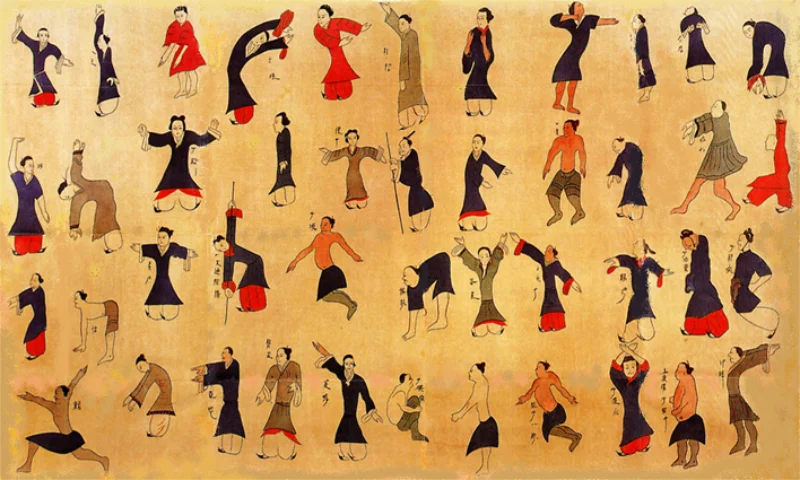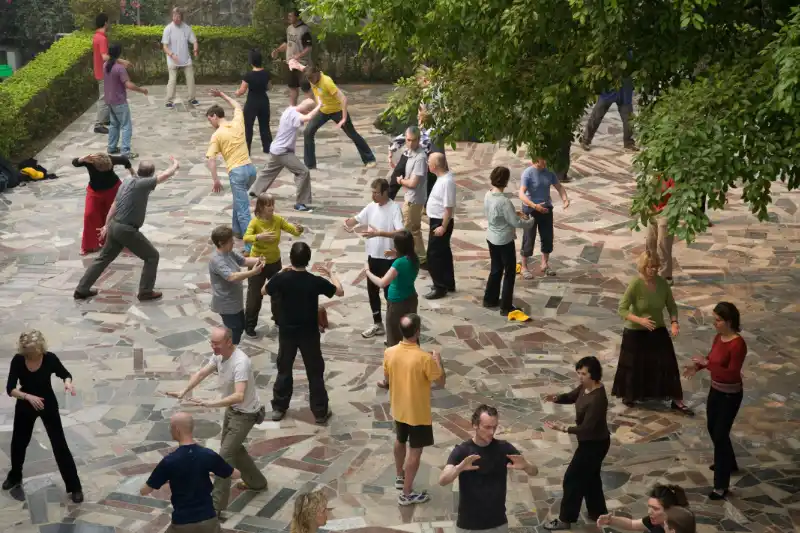In movement you should be like a dragon or a tiger.
In non-movement you should be like a Buddha.
Grandmaster Wang Xiang Zhai
Chi Kung

Chi Kung literally translates into “Energy Exercise, Training, Cultivation”. It is a generic term which is used for a wide range of Chinese health and power practices.
Their common goal is to stimulate and balance the internal flow of our innate energy, Chi.
This vital life force is of central importance in Chinese medicine and flows through channels in the body known in the West as meridians. The strength and unimpeded flow of Chi are key to our well-being and health.
A blockage in one place will lead to an overload of the energy system in another place – and consequently to a state of discomfort or disease.
Such blockages are caused by a number of factors. The most common ones are
- Sedentary lifestyle typical of office work
- Poor body posture
- Muscle tension – often caused by stress
In China, the knowledge of the central importance of Chi has been cultivated and refined over thousands of years. This insight and wisdom has long been used to prevent disease and premature aging, to heal illness, and is effectively applied in martial arts.
The strength and unimpeded flow of Chi are key to our well-being and health.
Today, due to the long history of Chi research and application, there are many different Chi Kung styles and schools. However, they all share the same goals: to develop inner strength and to open and clear the channels through which the vital Chi force is flowing.
The five signs of practice
Xing – The Form
Yi – The Mind
Li – The Power
Chi – The Energy
Shen – The Spirit
Professor Yu Yong Nian
Zhan Zhuang
Standing Like a Tree
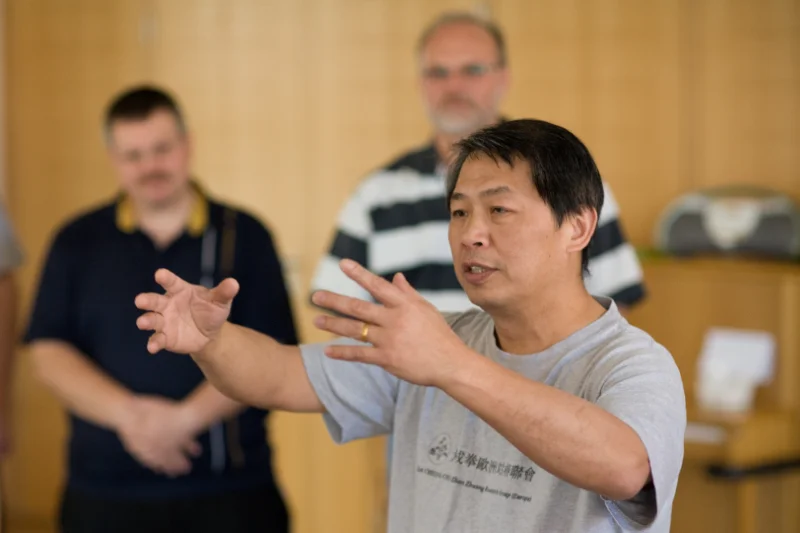
Zhan Zhuang is the Chi Kung system with the longest tradition, dating back 27 centuries. It is the foundation of all Chi Kung forms and is known for its great effectiveness and efficiency. Zhan Zhuang is pronounced “Jan Jong”, or “Jam Jong” in southern China, and is best translated as “Standing Like A Tree”.
For most people, training in Zhan Zhuang comes as a complete surprise at first. There are no recognizable external movements, although it is a highly energetic exercise system. Unlike many other methods, Zhan Zhuang develops our internal energy in a very efficient way, instead of consuming it.
Zhan Zhuang is practiced in well-balanced standing positions that increase the flow of energy and build internal strength. This system is based on a unique fusion of relaxation and exertion that stimulates, cleanses and internally massages the entire body.
Zhan Zhuang is the foundation of all Chi Kung forms and is known for its great effectiveness and efficiency.
Because Zhan Zhuang is so effective in raising our energy levels, it is often used as basic training for martial arts.
For a long time, Zhan Zhuang was a well-kept secret. It is only since the mid 40’s of the last century that Zhan Zhuang has been taught publicly. In Europe, Master Lam Kam Chuen introduced this unique Chi Kung system in 1987. He is also the author of the first book on Zhan Zhuang in the West.
Through the practice of Zhan Zhuang, we’re able to use our full potential – physical, mental and spiritual – in a completely natural way, without becoming exhausted.
The Essence of Zhan Zhuang
When you stand, you are like a tree.
You are growing from within.
Your feet, like roots, draw power from the earth.
Your body, like the trunk, is perfectly aligned.
You are unmoving, strong.
Your head is open to the heavens like the crown of the tree.
You rest calmly, the universe within your mind.
The Way of Energy, Master Lam
The Da Cheng Chuan
Great Accomplishment
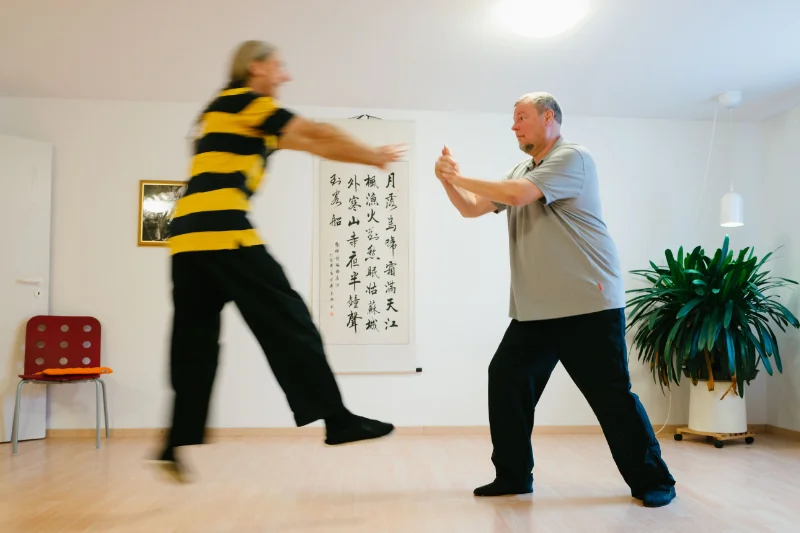
Da Cheng Chuan is the highest level of Chi Kung and one of the most powerful martial arts. It builds on the intensive practice of Zhan Zhuang.
The name Da Cheng Chuan means Great Accomplishment.
It is the crowning achievement of Grandmaster Wang Xiang Zhai, who traveled throughout China for more than ten years in the first half of the last century, studying with the greatest masters of his time.
The results of his commitment and dedication led to a groundbreaking realization: the elimination of all external aspects and the focus on the development of inner strength. Calmness and energy became the basis of a new revolutionary martial art: Da Cheng Chuan.
In the 1920s, Wang Xiang Zhai began sharing the fruits of his research with students in Beijing and Shanghai. He became famous throughout China and remains highly respected and revered to this day.
In addition to his unmatched martial arts prowess, Grandmaster Wang Xiang Zhai dedicated himself to the health and healing aspects of his art and founded the first Chi Kung clinics in China.
Your mind and body become exceptionally alert.
Your mental and emotional faculties are refreshed.
Da Cheng Chuan consists of the following seven elements: Zhan Zhuang (Standing Like a Tree), Shih Li (Power Testing), Tsou Pu ( Training the Legs), Fa Li (Power Explosion), Shi Sheng ( Testing of the Sound), Tui Shou (Circling Hands), and Jian Wu (Spontaneous Power Expression).
There are few, if any, martial arts systems more powerful than Da Cheng Chuan.
You will experience its lasting benefits as you go about your life and work.
Your mind and body become exceptionally alert. Your mental and emotional capacities are refreshed.
You will experience greater resilience under pressure and recover more easily from illness and injury.
For many years, Master Lam has carried on this art and was honored to be recognized as a lineage holder of the Da Cheng Chuan tradition by Madame Wang Yuk Fong, the daughter and spiritual heir of Grandmaster Wang Xiang Zhai.
Training in Da Cheng Chuan requires a thorough foundation in the practice of Zhan Zhuang. Therefore, it is only available to a few selected students.

Silence and Movement
In silence there must be movement, and in motion, there must be silence.
A small movement is better than a big movement.
No movement is better than a small movement
Silence is all the movement’s mother.
Grandmaster Wang Xiang Zhai
Ba Duan Jin
The Eight Strands of Brocade
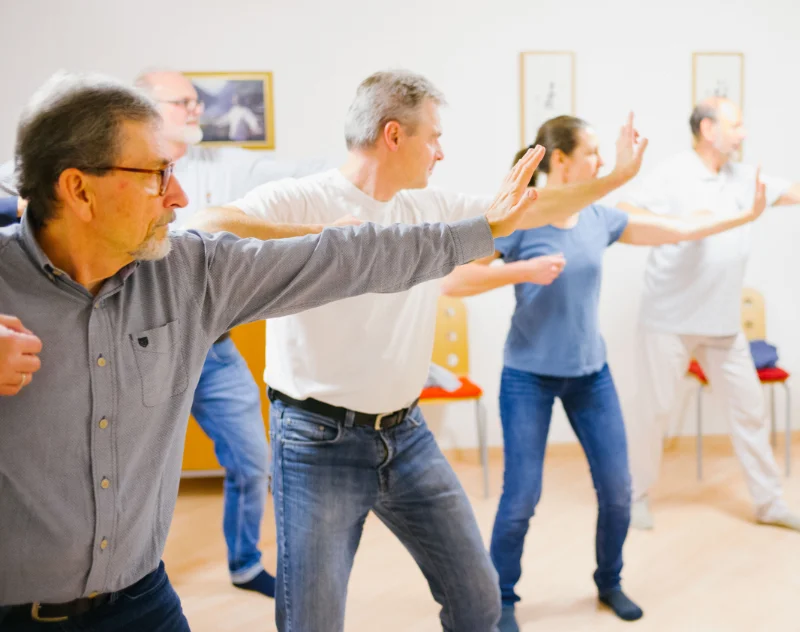
Ba Duan Jin, the Eight Strands of Brocade, is an ancient set of exercises for strengthening the internal organs and systems. It is very popular and practiced by people all over the world.
Each of the eight Ba Duan Jin exercises intensifies the flow of energy along the entire length of specific meridians. Thus, the complete set of exercises benefits the whole energy network, including the internal organs through which this energy passes. Regular practice is the ideal preparation you need to carry the “awakened dragon” of your Chi.
Like all popular traditions, the origins of Ba Duan Jin are shrouded in myth and legend. Some say the exercises originated several thousand years ago.
The most recent evidence of the long history of these movements comes from a silk book unearthed in 1979, known as the Dao Ying Xing Qi Fa (Method of Inducing the Free Flow of Chi). This book dates from the Western Han Dynasty (206 BCE to 23 CE) and contains 44 drawings of men and women in postures similar to Ba Duan Jin as it is practiced today.
Thus, the complete set of exercises benefits the whole energy network, including the internal organs through which this energy passes.
It is known that General Yeu Fei, who lived during the Southern Sung Dynasty (1177 – 1279), developed a set of twelve basic exercises to train his army. He later simplified them to eight – Ba Duan Jin. The fact that he and his army were never defeated in battle was attributed to his training.
To this day, visitors to the famous Shaolin Temple in Henan, China, will see statues of monks performing Ba Duan Jin. The monks themselves, who live in the temple, use this system as part of their daily training.
